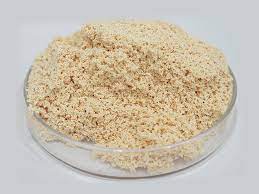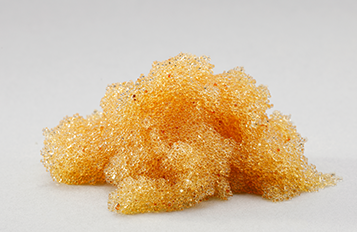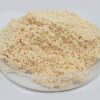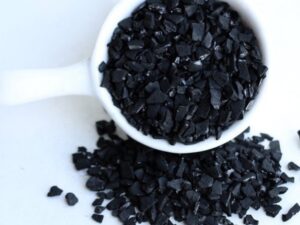Description
Resin Adsorbents: Tiny Beads with a Big Impact on Separation and Purification
In the world of chemistry and engineering, efficient separation and purification are crucial for a myriad of processes, from obtaining high-purity pharmaceuticals to cleaning up contaminated water. While various methods exist, resin adsorbents have emerged as powerful tools, providing a versatile and effective approach for selectively removing specific components from liquid or gaseous mixtures.
But what exactly are resin adsorbents, and what makes them so valuable?
What are Resin Adsorbents?
Resin adsorbents are synthetic, polymeric materials, typically produced in the form of small, spherical beads. These beads possess a high surface area due to their porous structure, providing ample sites for adsorption – the process where molecules adhere to the surface of a material.
The key to their effectiveness lies in their chemical composition and engineered properties. Different types of resins are designed with specific functional groups on their surface that interact selectively with target molecules. This selectivity allows for the isolation and concentration of desired substances while leaving unwanted components behind.
How Do They Work?
The process of adsorption using resin adsorbents involves several key steps:
- Contact: The mixture containing the target molecule (the adsorbate) is brought into contact with the resin adsorbent.
- Diffusion: The adsorbate molecules diffuse through the pores of the resin bead.
- Adsorption: The adsorbate molecules interact with the functional groups on the resin surface, binding through physical (van der Waals forces) or chemical (ionic or covalent bonding) interactions.
- Equilibrium: An equilibrium is established between the adsorbate molecules bound to the resin and those remaining in the surrounding solution.
- Desorption: The bound adsorbate molecules are released from the resin surface using a suitable solvent or by changing the environmental conditions (e.g., pH, temperature). This allows for the recovery of the purified target molecule and regeneration of the resin.
Types of Resin Adsorbents
The diverse applications of resin adsorbents stem from the wide range of available resin types, each tailored for specific separation needs. Some common categories include:
- Ion Exchange Resins: These resins contain charged functional groups (positive or negative) that selectively attract and bind ions of opposite charge. They are widely used in water softening, deionization, and purification of pharmaceuticals and other chemicals.
- Chelating Resins: These resins are specifically designed to bind metal ions, forming stable complexes. They are used in wastewater treatment to remove heavy metals, in hydrometallurgy for metal recovery, and in analytical chemistry for metal analysis.
- Adsorptive Resins: These resins rely on physical adsorption mechanisms, such as hydrophobic or van der Waals interactions. They are used for removing organic contaminants from water, purifying biopharmaceuticals, and separating mixtures based on molecular size and polarity.
- Affinity Resins: These resins contain highly specific ligands that bind to target molecules with high affinity, such as antibodies or enzymes. They are essential in biopharmaceutical purification, particularly for isolating proteins and antibodies.
Applications Across Industries
Resin adsorbents play a vital role in numerous industries, including:
- Water Treatment: Removing contaminants like heavy metals, organic pollutants, and hardness ions from water.
- Pharmaceuticals: Purifying drug molecules, separating enantiomers, and removing unwanted impurities.
- Biotechnology: Isolating and purifying proteins, antibodies, and other biomolecules.
- Food and Beverage: Clarifying juices, purifying sugars, and removing off-flavors.
- Chemical Industry: Separating and purifying chemical products, recovering valuable byproducts, and removing catalysts.
- Mining: Recovering valuable metals from ore leach solutions.
Advantages of Resin Adsorbents
The popularity of resin adsorbents can be attributed to their numerous advantages:
- High Selectivity: Engineered to target specific molecules, leading to efficient separation.
- High Capacity: Can adsorb significant amounts of target molecules.
- Regenerability: Can be reused multiple times, reducing operating costs.
- Versatility: Available in various forms and chemistries to suit diverse separation needs.
- Scalability: Can be used in both small-scale laboratory settings and large-scale industrial processes.
Future Trends
The field of resin adsorbents is constantly evolving, with ongoing research focused on developing:
- Novel Resins: Designed with enhanced selectivity, capacity, and stability.
- Process Intensification: Integrating adsorption processes with other separation techniques.
- Sustainable Resins: Utilizing bio-based and biodegradable materials.
- Advanced Modeling: Developing predictive models to optimize adsorption performance.
In conclusion, resin adsorbents are indispensable tools for separation and purification, offering a versatile and effective solution for a wide range of applications. As technology continues to advance, we can expect even more innovative and powerful resin adsorbents to emerge, further revolutionizing the way we separate and purify substances in various industries.



















Reviews
There are no reviews yet.